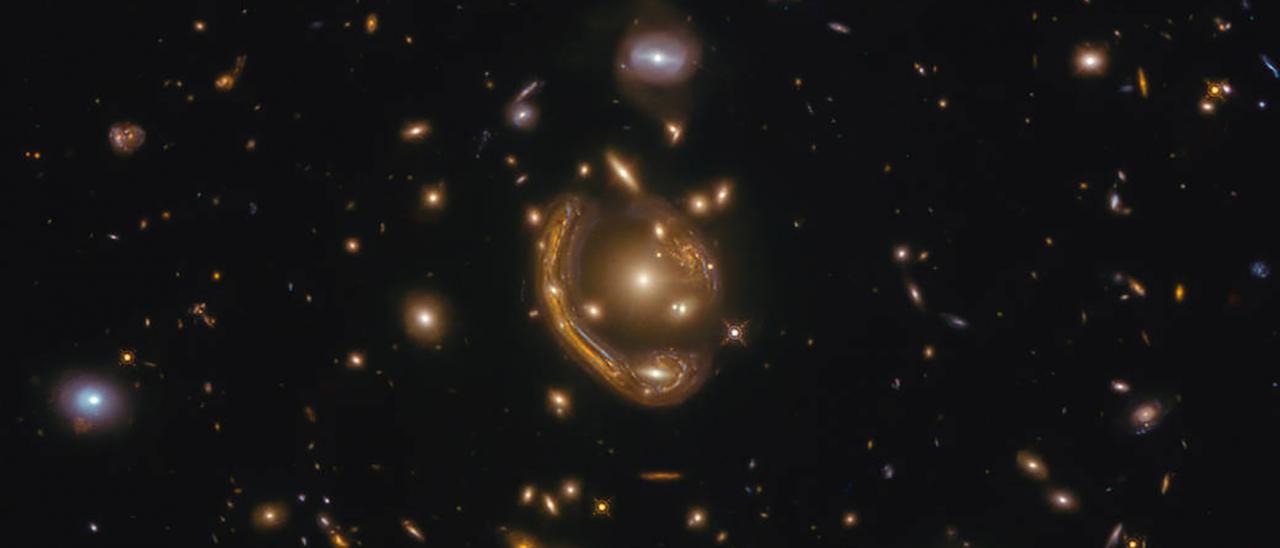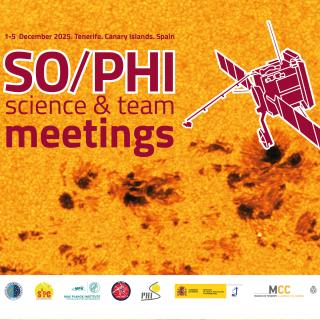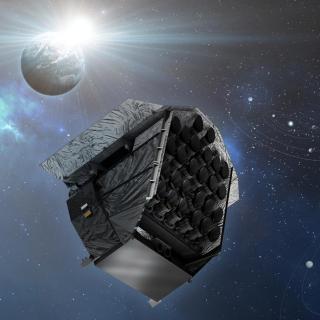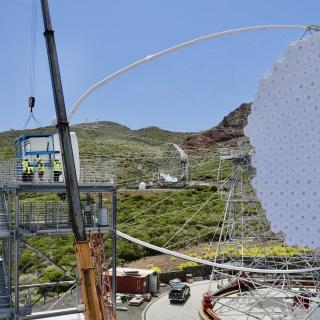In December 2020 a team from the European Space Agency (ESA) published an image taken by the Hubble Space Telescope (HST) of GAL-CLUS-022058s, the biggest and one of the most complete Einstein rings discovered, situated towards the southern hemisphere constellation of Fornax. Since then, those observations have been used to develop a model of gravitational lenses which has enabled the study of the physical properties of the amplified galaxy.
An international team of astronomers led by the researcher at the Polytechnic University of Cartagena (UPCT), Anastasio Díaz-Sánchez, with participation from the Instituto de Astrofísica de Canarias (IAC), has used observations over a range of wavelengths, including those from the HST, to study this Einstein ring in details. The results of the study are published today in the journal The Astrophysical Journal.
Einstein first suggested the existence of these objects in the General Theory of Relativity. The unusual form of this galaxy could be explained by a process termed gravitational lensing, which curves the light coming from the distant galaxy due to the gravity of an object situated between that galaxy and the observer.
In this case, the light from the distant galaxy has been distorted into the shape we see due to the gravitational effect of the cluster of galaxies in front of it. The almost perfect alignment of the distant galaxy with the centre of the cluster of galaxies, which is at the centre of the image, has deformed and amplified the image of the distant galaxy into an almost perfect circle. In addition, the gravity of the galaxies within the cluster produce additional deformations.
The team of astronomers has used observations at many wavelengths and, using optical data from the archives of the FORS instrument on the Very Large Telescope (VLT), and from their own observations made with the nFLASH20 instrument on the APEX (the Atacama Pathfinder Experiment) telescope, both belonging to the European Southern Observatory (ESO) in Chile, have determined the value of the redshift of the distant galaxy. To study this Einstein ring in detail, the HST images were essential.
“To derive the physical properties of the amplified galaxy we need a model of the gravitational lens. We have been able to obtain the model using the images from the Hubble Space Telescope”, explains Anastasio Díaz-Sánchez, a researcher at the Polytechnic University of Cartagena and first author of the article. “Specifically, the images from HST have helped us to identify the four images of the distant galaxy produced by the gravitational lens, and also the star clusters of the amplified galaxy”, he adds.
From this model of the lens, the team calculated the amplification factor, which is an important parameter of the gravitational lens. This permitted the study of the intrinsic physical properties of the amplified galaxy. “The amplified galaxy is one of brightest at submillimetre wavelengths” −states Helmut Dannerbauer, an IAC researcher and co-author of the article−. Our research has also shown that it is a normal star-forming galaxy, which is on the main sequence at the epoch of maximum star formation in the universe.
Of special interest for the research was the calculation of the distance to the distant galaxy using its redshift, which has a value of z = 1.47 and which shows that the light coming from it has travelled some 9,400 billion light years. “The detection of molecular gas, from which the new stars are born, allows us to calculate the redshift with high precision, and confirms that we are in fact observing a very distant galaxy”, indicates Nikolaus Sulzenauer, a doctoral student at the Max Planck Institute for Radio astronomy in Germany and a coauthor of the article, who carried out his master's thesis in collaboration with the researchers of the IAC and the UPCT of this study.
In addition, the team found that the amplification factor of the galaxy is 20, which means that the observing capability of HST is equivalent to that of a 48 metres telescope, larger than the extremely large telescopes currently planned.
“Thanks to the images from that telescope we can see clearly the spiral arms and the central bulge of the galaxy. This will help us to understand better the star formation in distant galaxies in upcoming observations of this galaxy”, explains Susana Iglesias-Groth, an IAC researcher and co-author of this article.
The team who carried out this study is A. Díaz-Sánchez (Polytechnic University of Cartagena), H. Dannerbauer (Instituto de Astrofísica de Canarias), N. Sulzenauer (Max Planck Institute for Radio astronomy, Germany), S. Iglesias-Groth (Instituto de Astrofísica de Canarias) and R. Rebolo (Instituto de Astrofísica de Canarias).
Article: A. Díaz-Sánchez, H. Dannerbauer, N. Sulzenauer, S. Iglesias-Groth, y R. Rebolo. “The Einstein ring GAL-CLUS-022058s: a Lensed Ultrabright Submillimeter Galaxy at z=1.4796”. The Astrophysical Journal, September 23, 2021. DOI: https://doi.org/10.3847/1538-4357/ac0f75
- Arxiv: https://arxiv.org/abs/2106.14281
Contact at the IAC:
- Helmut Dannerbauer: helmut [at] iac.es (helmut[at]iac[dot]es)
- Susana Iglesias-Groth: sigroth [at] iac.es (sigroth[at]iac[dot]es)
- Rafael Rebolo: rrl [at] iac.es (rrl[at]iac[dot]es)




